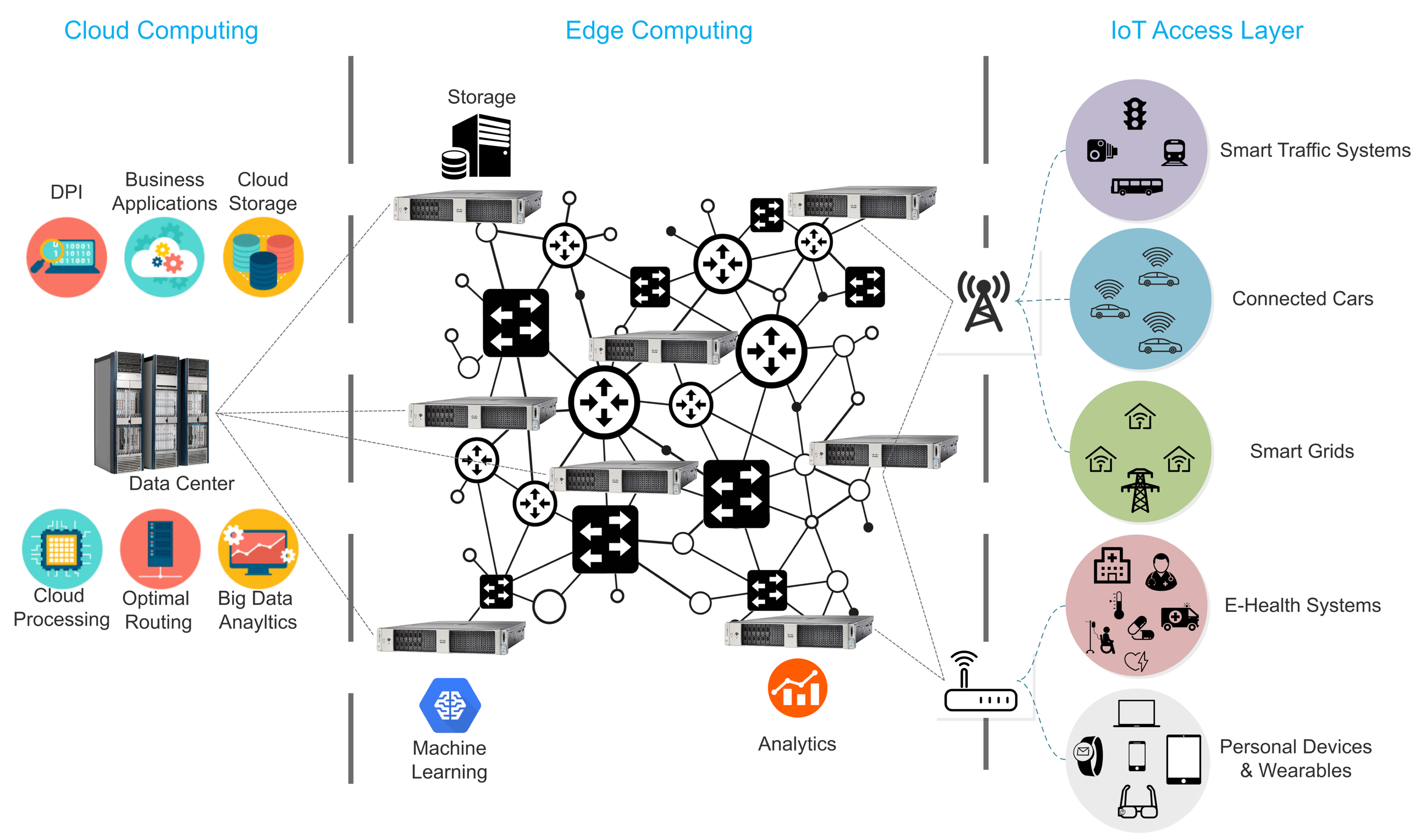What is Edge Computing? Edge computing is a distributed computing paradigm which brings data center services closer to the last hop of the network, where end devices reside. Edge computing aims to partially or completely shift the processing and computation power from a centralized data center toward distributed edge devices.
Network Function Virtualization (NFV) is a fundamental enabling technology for Edge computing. NFV enables dynamic and cost-effective deployment and management of network services and applications on top of commercial off-the-shelf (COTS) servers.
In one vision of this architecture, presented by the European Telecommunications Standards Institute (ETSI), specifically for Internet of things (IoT) devices, data comes in from the physical world via various sensors from the IoT sensing layer. These sensors generate volumes of Big Data traffic, where data has to be analyzed and processed in real time to take actions that change the physical state of various actuators residing in the IoT access layer.
Edge computing takes advantage of the proximity of servers to the physical items of interest, in order to offload and assist the low powered IoT layer, while minimizing network latency and transportation costs.

Edge Computing Architecture